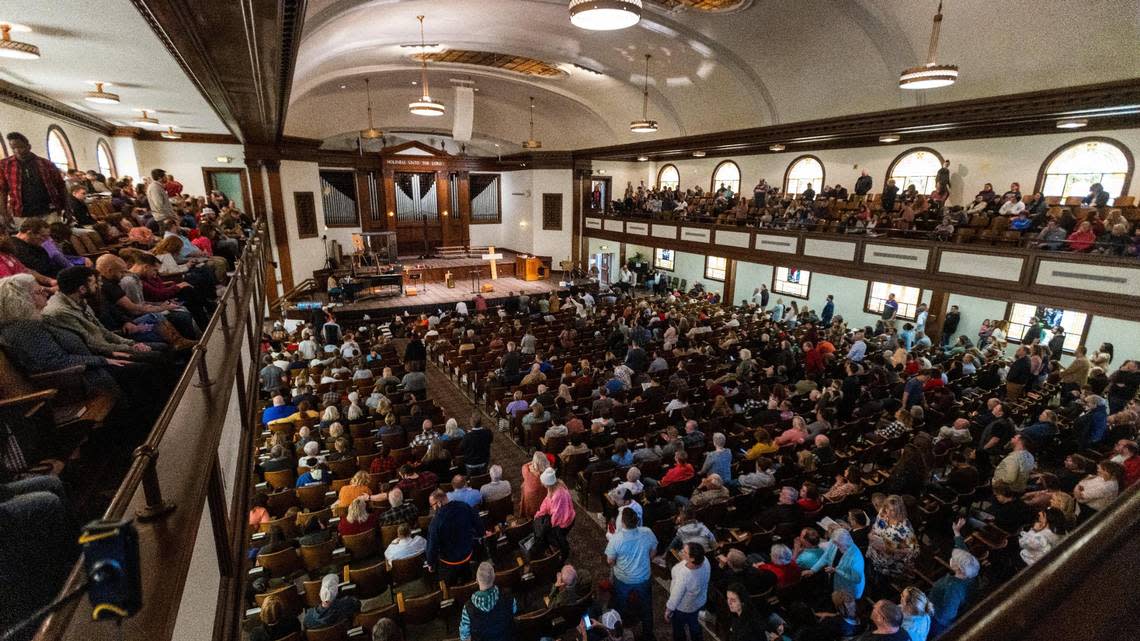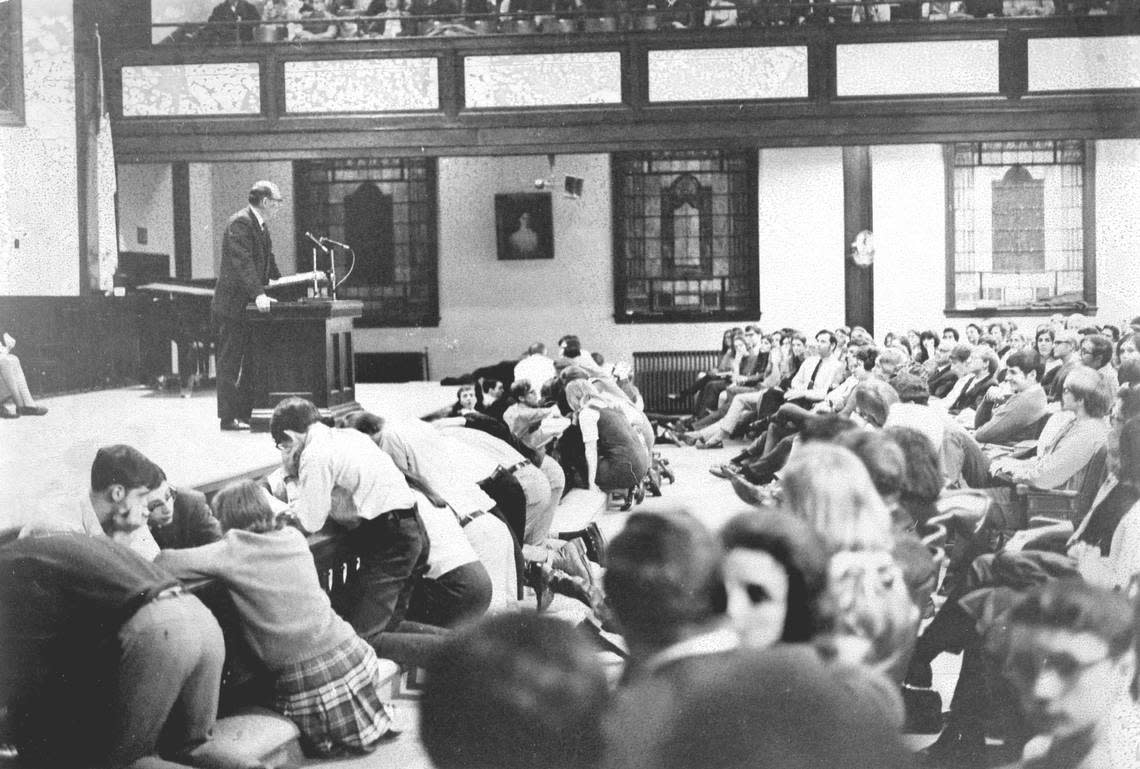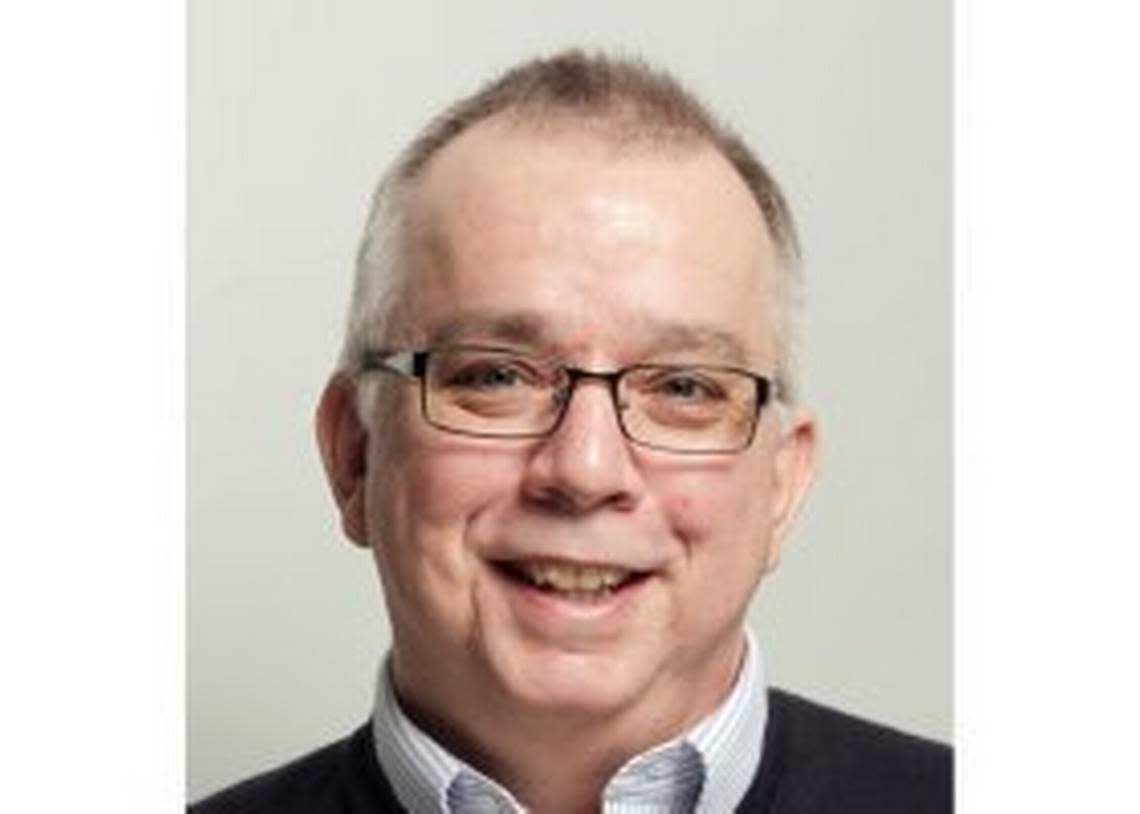History repeats itself as another spontaneous revival sweeps Asbury University | Opinion
As you may have heard in news reports, a spontaneous religious revival broke out Feb. 8 at an ordinary, scheduled chapel service at Asbury University in Wilmore.
As I write this, nearly a week later, it’s still going, 24 hours a day.
The faithful and the curious have flooded into Wilmore from around the state and the nation to be part of the experience.
“It’s not winding down,” said Craig Keener, a widely regarded biblical studies scholar at Asbury Theological Seminary, which is across the street from the university.
“People have been praying for it for years,” he said. “I was hoping it would happen before I retired.”
At some points the university’s chapel has been so crowded the seminary’s chapel is being used as an overflow site. The two schools are separate institutions.
Keener emphasized he wasn’t involved with the revival’s outbreak and isn’t a leader of the ongoing events. But he’s attended services at the university multiple days.
“It started with the students,” he said. “I think they’re the most important component.”
He said the gathering has been marked by prayer and worship, mainly, with an occasional sermon, too. This past Saturday, Feb. 11, roughly 1,000 people took the Lord’s Supper together.

The awakening began with an ordinary, regularly scheduled 10 a.m. chapel service. For some reason, this one didn’t end. People didn’t want to leave. They felt what they interpreted as an unusually palpable presence of God.
As odd as all this might seem, spontaneous revivals in Christianity aren’t terribly unusual.
On Feb. 3, 1970, a revival erupted at what was then Asbury College. That one, too, began at a morning chapel service. It lasted 185 hours non-stop. Intermittently it continued for weeks. Ultimately it spread across the United States and to other countries.

I wrote an in-depth story about it in 1990 to mark its 20th anniversary, and interviewed alumni and academics who told me they were still feeling its spiritual effects two decades later.
Previous revivals had struck Asbury in 1905, 1950 and 1958.
Asbury is an interdenominational religious school whose roots are in the Wesleyan tradition of the Methodist Church. John and Charles Wesley, brothers, were 18th-century revivalists. In a sense, revivalism is baked into Asbury’s DNA.
Revivals also are baked into Kentucky’s DNA.
An important revival in Logan County sparked the even greater Cane Ridge Revival in Bourbon County in 1801. Cane Ridge drew upwards of 20,000 people and introduced the massive Second Great Awakening to the South.
One historian has called it “arguably … the most important religious gathering in all of American history.”
It helped transform the South from a refuge for violent brigands into the Bible Belt.
But revivals aren’t just a phenomenon of Kentucky or the Bible Belt.
Before the Second Great Awakening, there had been the First Great Awakening. It swept Britain’s American colonies beginning in the early 1700s, partly as the result of a religious ferment roiling Europe.
Or we could talk about the 1906 Azusa Street Revival in Los Angeles. It broke out among a ragtag congregation in a rundown neighborhood and ran day and night for years. Scholars consider it the birthplace of Pentecostalism, which has grown into the second-largest branch of Christianity, next only to the Roman Catholic Church.
Across the centuries there have been other landmark revivals in Canada, Wales, Timor, you name it. Revivals here, there, everywhere. And of course, the Christian faith itself was birthed in a revival recounted in the biblical Acts of the Apostles.
Even the church I pastor experienced a spontaneous revival in the late 1990s—albeit on a much smaller scale. It was startling. It just seemed to happen. It lasted less than a week, but it was powerful and I remember it with gratitude.
As you might imagine, there are as many explanations for these revivals as there are pundits to comment on them. Unsurprisingly, the explanations tend to mirror each pundit’s a priori assumptions about God and the nature of reality.
Some view revivals as manifestations of superstition, hysteria and social contagion. Some see them as reactions to major social upheavals—revivals occur when we’re rattled and want quick fixes for our uncertainties.
Others see them as merciful visitations from God, who cares about people and occasionally shows up in especially dramatic ways to let us know it.
Not one soul has asked my opinion, and for good reason. But I rarely let lack of demand stop me from opining anyway.
I suspect there’s an element of truth to all the explanations. One explanation doesn’t automatically rule out the others. Causes, like effects, overlap, intermingle and vary from revival to revival and participant to participant.
If you’re wondering how long the event at Asbury might last, that’s another tricky question. It could be over by the time you read this.
On the other hand, as Keener the professor pointed out, the Moravian revival in German Saxony, which began in 1727, lasted 100 years.
Whenever a spiritual visitation such as this arrives, you just never know. That’s part of the excitement. Any new revival could prove to be a very limited matter, soon past and forgotten. Or it could change everything, forever.

Paul Prather is pastor of Bethesda Church near Mount Sterling. You can email him at pratpd@yahoo.com.
